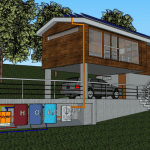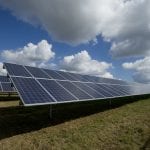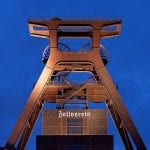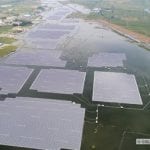Around The Web
IVF ethics pioneer Mary Warnock dies
US congressman outlines climate policy framework for future legislation
Climate change could make insurance too expensive for ordinary people – report
Munich Re, world’s largest reinsurance firm, warns premium rises could become social issue
Insurers have warned that climate change could make affordable cover for ordinary people unaffordable after the world’s largest reinsurance firm blamed global warming for $24bn (£18bn) of losses in the Californian wildfires.
Ernst Rauch, Munich Re’s chief climatologist, told the Guardian that the costs could soon be widely felt, with premium rises already under discussion with clients holding asset concentrations in vulnerable parts of the state.
Continue reading...China to leave out coal in new green bond standards -media
Bloodhound: Land speed record car is relaunched
NSW election: where do the parties stand on brumby culling?
How I got solar installed at my NSW school – and how you could, too
 Within six months, I single-handedly organised, lobbied and arranged funds for a $100k, 100kW solar installation for my school in Sydney’s south. Here's how it was done.
Within six months, I single-handedly organised, lobbied and arranged funds for a $100k, 100kW solar installation for my school in Sydney’s south. Here's how it was done.
The post How I got solar installed at my NSW school – and how you could, too appeared first on RenewEconomy.
Hyundai Kona sales face limits and delays, as video reveals nearly all
 Hyundai Australia confirms all-electric Kona available "in coming weeks", but numbers limited, as an early video review comes to light.
Hyundai Australia confirms all-electric Kona available "in coming weeks", but numbers limited, as an early video review comes to light.
The post Hyundai Kona sales face limits and delays, as video reveals nearly all appeared first on RenewEconomy.
UNSW says home hydrogen storage for rooftop solar could be real by 2020
 UNSW and Tamworth company H2Store win investor support for hydrogen storage that could be applied to home solar storage by late 2020.
UNSW and Tamworth company H2Store win investor support for hydrogen storage that could be applied to home solar storage by late 2020.
The post UNSW says home hydrogen storage for rooftop solar could be real by 2020 appeared first on RenewEconomy.
The world may be nursing a gas bomb
 State and national governments believe expanding gas production can be ‘made safe’ and also help reduce world greenhouse gas emissions. Our research disagrees.
State and national governments believe expanding gas production can be ‘made safe’ and also help reduce world greenhouse gas emissions. Our research disagrees.
The post The world may be nursing a gas bomb appeared first on RenewEconomy.
Telstra flags plans to underwrite 300MW of new solar, wind
 Telstra is preparing to tender for another 300MW of new solar, wind – this time in the NSW market – to further cut its exposure to volatile grid prices.
Telstra is preparing to tender for another 300MW of new solar, wind – this time in the NSW market – to further cut its exposure to volatile grid prices.
The post Telstra flags plans to underwrite 300MW of new solar, wind appeared first on RenewEconomy.
CO2CRC to investigate greenhouse gas emissions reduction in steel manufacturing
 CO2CRC has been awarded funding to conduct important research into reducing greenhouse gas emissions in steel production.
CO2CRC has been awarded funding to conduct important research into reducing greenhouse gas emissions in steel production.
The post CO2CRC to investigate greenhouse gas emissions reduction in steel manufacturing appeared first on RenewEconomy.
Why Europe could be the next solar powerhouse
 Unsubsidized solar power, energy-smart homes and communities, greening of corporations, and zero-emission hydrogen mean Europe may re-emerge as a global leader in solar systems.
Unsubsidized solar power, energy-smart homes and communities, greening of corporations, and zero-emission hydrogen mean Europe may re-emerge as a global leader in solar systems.
The post Why Europe could be the next solar powerhouse appeared first on RenewEconomy.
German coal generators could be reused as storage plants
 German researchers suggest turbines from coal power plants can be re-purposed to provide heat and cooling using molten salt storage and renewable power.
German researchers suggest turbines from coal power plants can be re-purposed to provide heat and cooling using molten salt storage and renewable power.
The post German coal generators could be reused as storage plants appeared first on RenewEconomy.
China completes new 70MW floating solar PV project on old coal area
 Ciel & Terre announce completion of world's biggest floating solar project, built on a former coal mining area in China.
Ciel & Terre announce completion of world's biggest floating solar project, built on a former coal mining area in China.
The post China completes new 70MW floating solar PV project on old coal area appeared first on RenewEconomy.
Australia has enough solar, wind storage in pipeline to go 100% renewables
 New data suggests the pipeline of wind, solar and storage projects in Australia is nearing 100GW - possibly enough for the country to go 100% renewables.
New data suggests the pipeline of wind, solar and storage projects in Australia is nearing 100GW - possibly enough for the country to go 100% renewables.
The post Australia has enough solar, wind storage in pipeline to go 100% renewables appeared first on RenewEconomy.
Mount Everest: Melting glaciers expose dead bodies
What Australia can learn from Victoria's shocking biodiversity record
Lord Howe Island: bleaching revealed on world's most southern coral reef – video
Marine biologist Dave Harasti has posted shocking footage of coral bleaching off Lord Howe Island, which lies in the Tasman Sea between Australian and New Zealand. Its location approximately 600km north-east of Sydney makes it the world's most southern coral reef
Continue reading...


